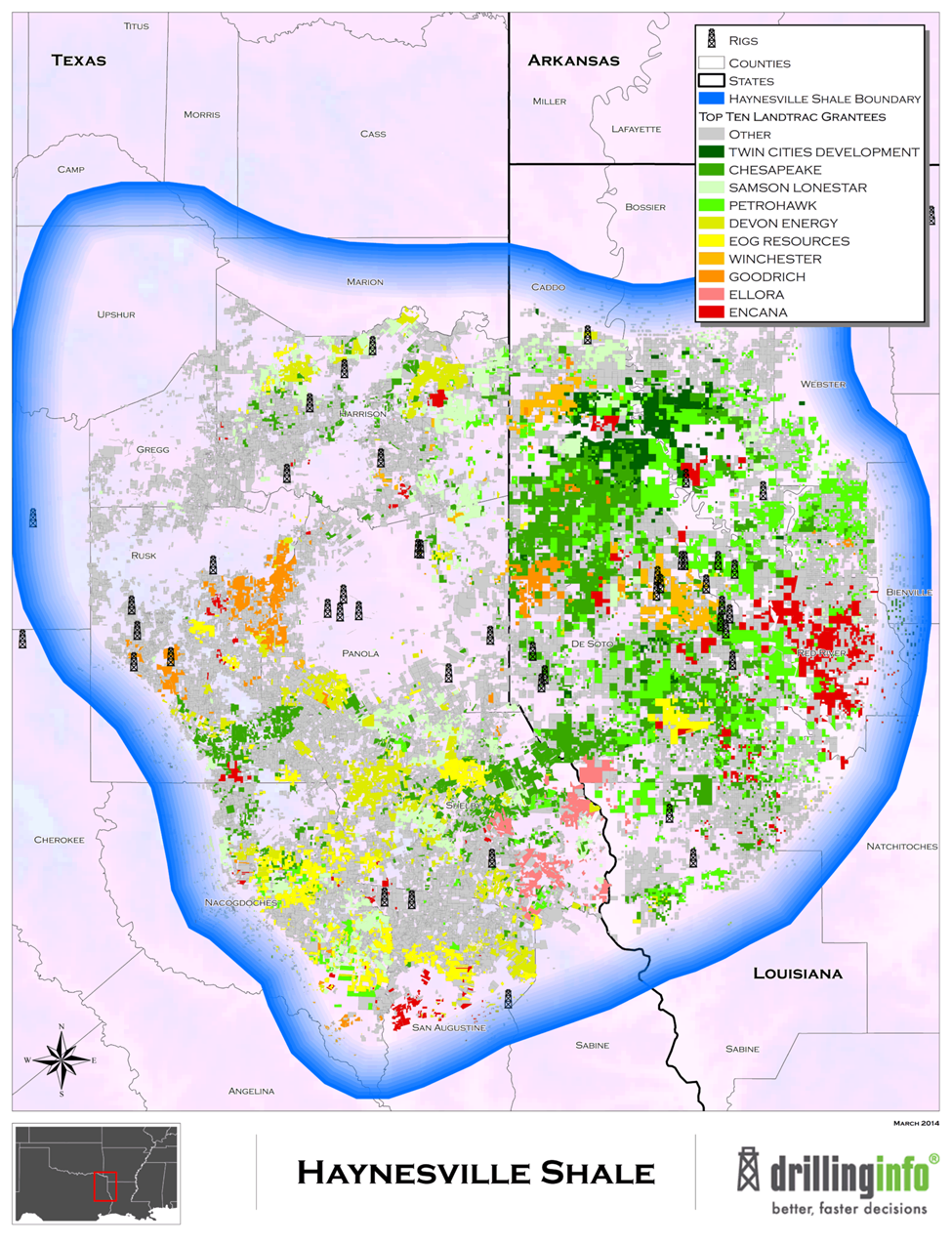Location

Excerpts from the Wikipedia Article
The Haynesville Shale is an informal, popular name for a Jurassic Period rock formation that underlies large parts of southwestern Arkansas, northwest Louisiana, and East Texas. It lies at depths of 10,500 to 13,000 feet below the land’s surface.[1][2] It is part of a large rock formation which is known by geologists as the Haynesville Formation. The Haynesville Shale underlies an area of about 9,000 square miles and averages about 200 to 300 feet thick. The Haynesville Shale is overlain by sandstone of the Cotton Valley Group and underlain by limestone of the Smackover Formation.[3][4]
It contains vast quantities of recoverable natural gas. This natural gas is known as "shale gas" because the wells produce from low permeability mudstones that are also the source for the natural gas. It was known to contain large quantities of natural gas prior to 2008. However, prior to that time, it was uneconomic to extract the natural gas. As a result of rising gas prices and improved technology in hydraulic fracturing and directional drilling, it became possible to extract the gas from the Haynesville Shale in an economic and cost-effective manner.[3]
The Haynesville Shale came into prominence in 2008 as a major producer of shale gas in East Texas and Louisiana. Producing natural gas from the Haynesville Shale involves drilling wells from 10,000 feet (3,000 m) and to 13,000 feet (4,000 m) deep; the formation becomes deeper to the south.
In 2008, the Haynesville Shale was thought to be the largest natural gas field in the contiguous 48 states with an estimated 250 trillion cubic feet (7.1×1012 m3) of recoverable gas. More recently, as of 2009, the Haynesville was estimated to have 75 trillion cubic feet of recoverable gas, second only to the Marcellus Formation in the US.[11] Some scientists estimated recoverable reserves average of 6.5 billion cubic feet per well.[12] The US Energy Information Administration estimated that the average well would produce 2.67 billion cubic feet of gas.[13]
Production has boomed since 2008, creating a number of new millionaires in the Shreveport, Louisiana region.[14] Haynesville gas production peaked at 7.2 billion cubic feet per day in November 2011. In January 2013 the formation produced 6.2 billion cubic feet per day, 9.3% of all the gas produced in the US.[15]
The other members of the Haynesville Formation are also the source of oil and gas production. Oil and gas is currently produced from shelf-edge carbonate reservoirs which consist of oolite shoals within the Gilmer Limestone and Buckner Anhydrite members. The submarine fan sandstones of the Gray sand in north Louisiana are also significant producers.[7][16]
Proved Reserves[edit]
- 2010, US Energy Information Administration: 24.5 trillion cubic feet of gas
- 2011, US Energy Information Administration: 29.5 trillion cubic feet of gas[17]
